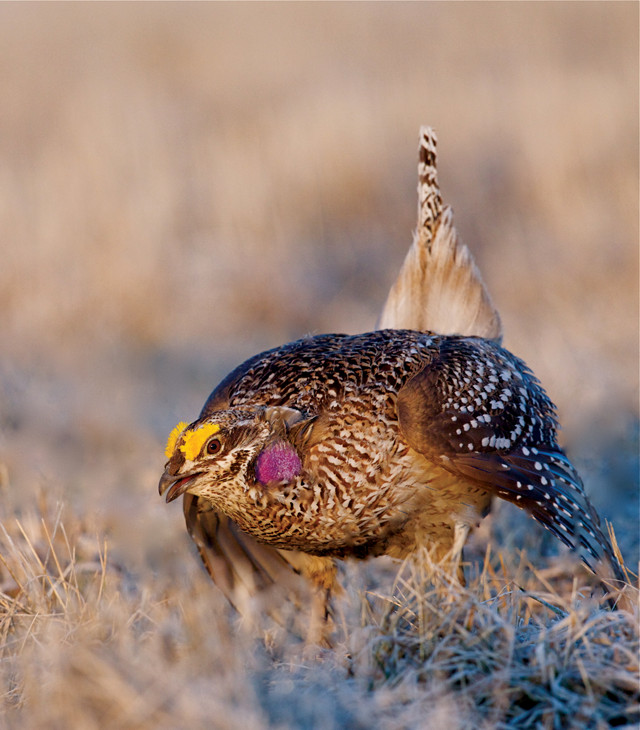
by Mary Caperton Morton Tuesday, April 7, 2015

Birds are one of the most diverse groups of vertebrates on Earth, with more than 10,000 known species. Credit: ©Shutterstock.com/Tom Reichner.
Birds, the only surviving descendants of dinosaurs, have one of the most fascinating — and perplexing — family trees in the animal kingdom. To sort it out, an international collaboration known as the Avian Phylogenomics Project has sequenced the genomes of dozens of different bird species, representing all the orders in the bird family. Even with a glut of new data, however, many questions remain about the branches of the avian family tree.
Birds evolved from dinosaurs sometime before the meteor-aided mass extinction roughly 66 million years ago. But when exactly this early evolution occurred and how they diversified into the vast number of bird species seen today is something of a mystery.
“Birds are a difficult problem in evolutionary biology,” says Sushma Reddy, an evolutionary biologist at Loyola University Chicago not involved with the project. “It seems that they evolved very quickly into the different groups we are familiar with today, within a few million years.” That explosion of diversity is not well documented in the fossil record, but scientists surmised that a more detailed account might be found by identifying similarities and differences across different avian genomes.
Over the past four years, an international team from more than 80 institutions in 20 countries has sequenced the genomes of 45 species of birds. The project was led by Guojie Zhang of the China National GeneBank at the Beijing Genomics Institute, Erich Jarvis of Duke University in North Carolina and Thomas Gilbert of the University of Copenhagen in Denmark. The team’s collective findings were published in December in multiple studies, including eight in a special issue of Science, and 20 others appearing in journals such as Genome Biology and GigaScience.
“This is an unprecedented amount of data,” says Claudio Mello, a neuroscientist at the Oregon Health and Science University in Portland and a co-author of two of the studies in Science. “We have the genomes of birds in all branches of the avian tree, which is enabling us to resolve the tree of life in new detail.”
For example, the updated avian family tree helps clarify many relationships between modern birds. It confirms that parrots and songbirds are closely related, whereas falcons and hawks are not — both controversial findings first proposed by a previous genomic study published in 2008, Reddy says. Comparisons to the dinosaur genome remain elusive, however, because intact dinosaur DNA has not yet been recovered.
The newly published sequences, including those of the crow, duck, pigeon, falcon, woodpecker, eagle, ostrich and dozens of others, join the previously published chicken, turkey and zebra finch genomes. The unprecedented collection of 48 genomes (representing 45 species) also sheds light on why bird genomes, in general, are about 70 percent smaller than those of mammals, a finding first presented in 2008.
“One major reason that bird genomes are so small is because they don’t have much repetitive DNA,” Zhang said in a teleconference. “Another reason is that bird genomes have experienced massive gene loss in their ancestral stages.” Compared to other vertebrates, all bird genomes are missing at least 1,600 genes, lost through gene selection, he said, many of which serve “essential functions in humans, including some related to reproduction, skeleton formation and lung systems.
“The loss of these key genes may have had a significant effect on the evolution of many distinct phenotypes of birds,” Zhang said. For example, he noted, the loss of teeth and dysfunction of one ovary in birds, both thought to be adaptations that promoted flight by making birds lighter, might have resulted from losing certain genes.
Among other results from the trove of new research, one of the new studies, led by Robert Meredith from Montclair State University in New Jersey and published in Science, found that birds began losing their teeth and developing beaks around 116 million years ago, the clearest indication yet of when that milestone occurred. Another of the studies in Science, led by Osceola Whitney of Duke University, found that as much as 10 percent of the bird genome is devoted to singing and communication. Yet another study in Science, led by Andreas Pfenning, also at Duke, found that the regions of the bird genome involved in learning songs overlap substantially with the genes devoted to learning language in humans. Each of these findings fills in gaps in the backstory of birds, researchers say.
“Overall, this project has allowed us to resolve a few longstanding debates in ornithology,” Jarvis says.
Despite all of the new information, questions remain. “Because birds diversified in such a short period of time, the signatures for how they evolved into all of these different orders were not well preserved in either their anatomy or their genetics,” Reddy says. “Even with the entire genomes of all the orders,” she says, there are many relations among birds and between birds and other animals that remain unresolved.
Sequencing the genomes of additional bird species, particularly species from branches that are not well defined, such as the owls, may help clarify the picture. But a more detailed history of the avian family tree will most likely be found by determining which genes are responsible for which traits, Reddy says.
“That’s really the next step in genomics,” Reddy says. “We’re just beginning to figure out what all those genes mean and how they generated the incredible diversity of birds. We’ll be drawing on this dataset for decades to come.”
© 2008-2021. All rights reserved. Any copying, redistribution or retransmission of any of the contents of this service without the expressed written permission of the American Geosciences Institute is expressly prohibited. Click here for all copyright requests.